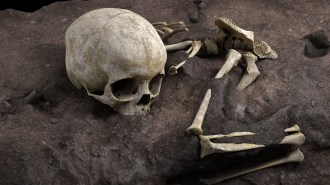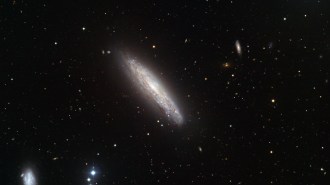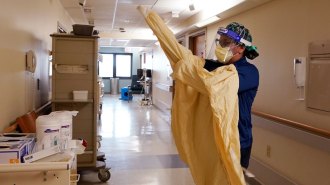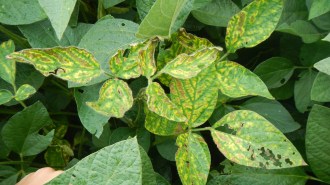All Stories
-
 Anthropology
AnthropologyA child’s 78,000-year-old grave marks Africa’s oldest known human burial
Cave excavation of a youngster’s grave pushes back the date of the first human burial identified in the continent by at least a few thousand years.
By Bruce Bower -
 Space
SpaceA rare glimpse of a star before it went supernova defies expectations
A hydrogen-free supernova in a nearby galaxy appears to have come from an unusual source.
-
 Health & Medicine
Health & MedicineHow a small city in Brazil may reveal how fast vaccines can curb COVID-19
Almost all adults in Serrana, Brazil, got COVID-19 shots. That may help answer questions about how well vaccines will work to end the pandemic.
-
 Health & Medicine
Health & MedicineHere’s what breakthrough infections reveal about COVID-19 vaccines
Studies analyzing vaccinated people in the real world show that COVID-19 vaccines are extremely effective, but experts are keeping an eye on variants.
-
 Science & Society
Science & SocietyA few simple tricks make fake news stories stick in the brain
Human brains rely on shortcuts to be efficient. But these shortcuts leave us vulnerable to false information.
-
 Science & Society
Science & Society2,500 years ago, the philosopher Anaxagoras brought science’s spirit to Athens
Natural philosopher Anaxagoras promoted the view that phenomena should be explained by natural processes, not attributed to the actions of the gods.
-
 Health & Medicine
Health & MedicineMeet three moderators fighting disinformation on Reddit’s largest coronavirus forum
Science News spoke with volunteers about what it takes to correct misinformation online during a pandemic.
-
 Health & Medicine
Health & MedicineThe surge in U.S. coronavirus cases shows a shift in who’s getting sick
Younger, unvaccinated people are a rising share of COVID-19 cases, raising concerns anew that lack of vaccine access may hit minority populations hard.
-
 Agriculture
AgricultureNanoscale nutrients can protect plants from fungal diseases
Applied to the shoots, nutrients served in tiny metallic packages are absorbed more efficiently, strengthening plants’ defenses against fungal attack.
By Shi En Kim -
 Science & Society
Science & SocietyThe book ‘Viral BS’ offers a cure for medical myths and fake health news
In ‘Viral BS,’ physician and author Seema Yasmin fights misinformation with a dose of storytelling.
-

-

When attacks on science threaten our survival
Editor in chief Nancy Shute reflects on the proliferation of false information and the importance of combating its spread.
By Nancy Shute